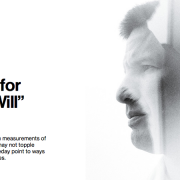Searching for the “Free Will” Neuron
Gabriel Kreiman’s single-neuron measurements of unconscious decision-making may not topple Descartes, but they could someday point to ways we can learn to control ourselves.
By David Talbot on June 17, 2014
“A variety of imaging studies in humans have revealed that brain activity related to decision-making tends to precede conscious action. Implants in macaques and other animals have examined brain circuits involved in perception and action. But Kreiman broke ground by directly measuring a preconscious decision in humans at the level of single neurons. To be sure, the readouts came from an average of just 20 neurons in each patient. (The human brain has about 86 billion of them, each with thousands of connections.) And ultimately, those neurons fired only in response to a chain of even earlier events. But as more such experiments peer deeper into the labyrinth of neural activity behind decisions—whether they involve moving a finger or opting to buy, eat, or kill something—science could eventually tease out the full circuitry of decision-making and perhaps point to behavioral therapies or treatments. “We need to understand the neuronal basis of voluntary decision-making—or ‘freely willed’ decision-making—and its pathological counterparts if we want to help people such as drug, sex, food, and gambling addicts, or patients with obsessive-compulsive disorder,” says Christof Koch, chief scientist at the Allen Institute of Brain Science in Seattle (see “Cracking the Brain’s Codes”). “Many of these people perfectly well know that what they are doing is dysfunctional but feel powerless to prevent themselves from engaging in these behaviors.” ”

